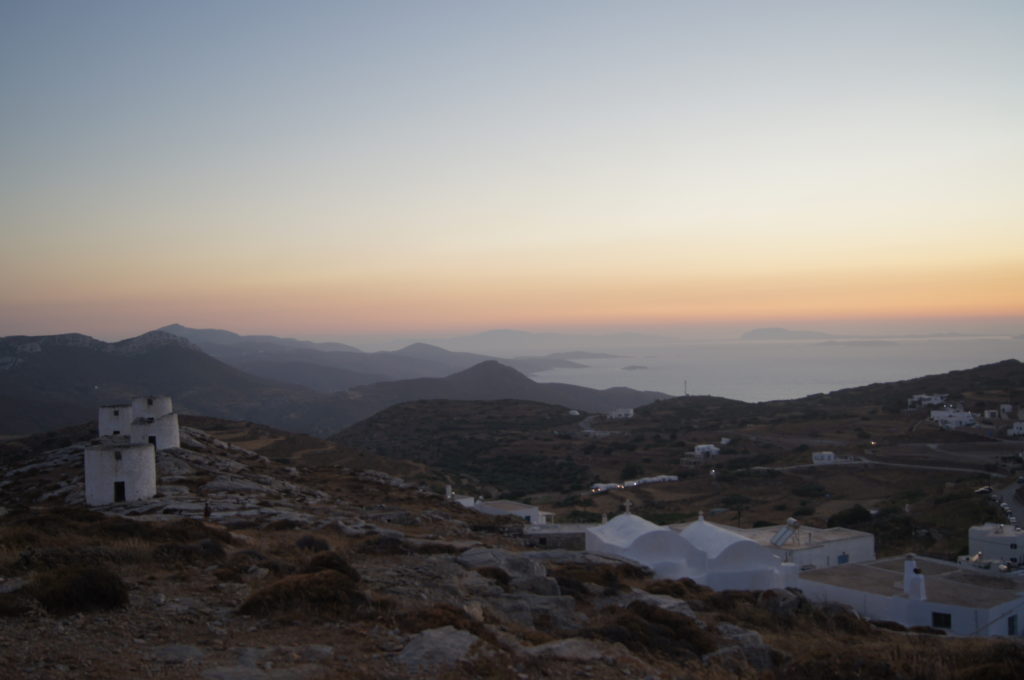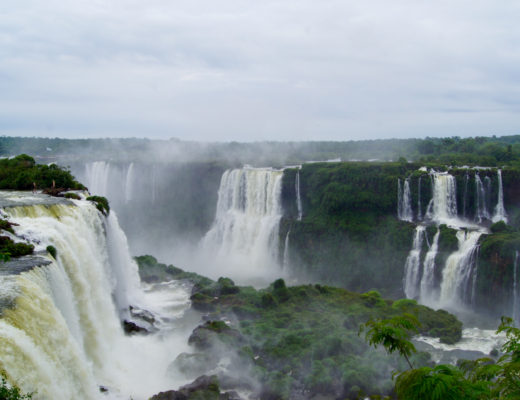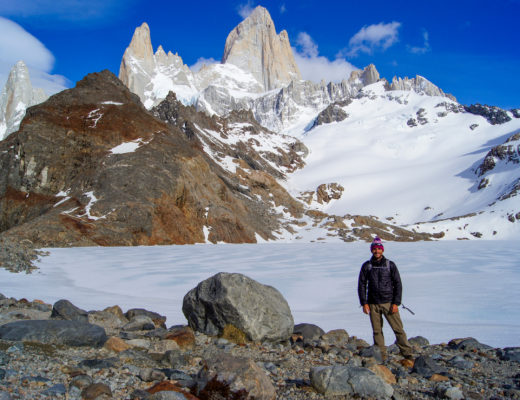Next Stop, Crete!
After speaking with fellow travelers, locals, and hostel employees (who are always a phenomenal travel resource), I decided to visit Chania, Crete, the second largest city in Crete. A number of people gave Chania rave reviews, but warned me to keep my visit short / stay clear of Crete’s capital city, Heraklion, so I heeded their advice and passed on Heraklion altogether. Rather than take a ten hour ferry from Athens, I took a speedy one hour flight to Chania and, upon arriving in Chania’s Old Venetian Harbor, I instantly knew that stopping in Chania was the right play. **There are numerous ferries to the Greek Islands, but I recommend searching for flights; flights are relatively inexpensive and can save you loads of valuable travel time.
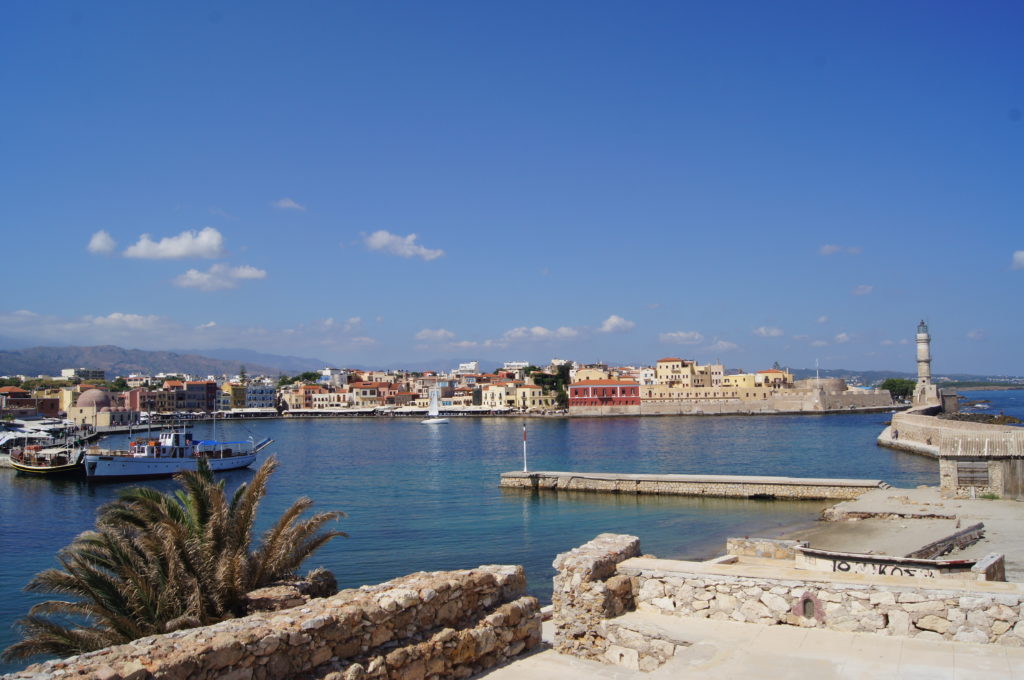
Chania, Crete
Chania and its beautiful harbor, especially at sunset, deserve your attention. Instead of the traditional Greek white stucco buildings, Chania is comprised of colorful apartments, restaurants, and shops. As soon as I arrived in Chania, I breathed a sigh of relief; although there were plenty of tourists, who were generating a bottleneck along the main foot lane of the Old Town, the vibe was completely different from that of Athens. People, both tourists and Greeks, wanted to stop and experience Chania, not just visit ancient ruins and move on. I roamed up and down Chania’s many rustic cobblestone alleyways. I observed that the majority of the Greek tavernas were occupied by locals. Always a good sign.
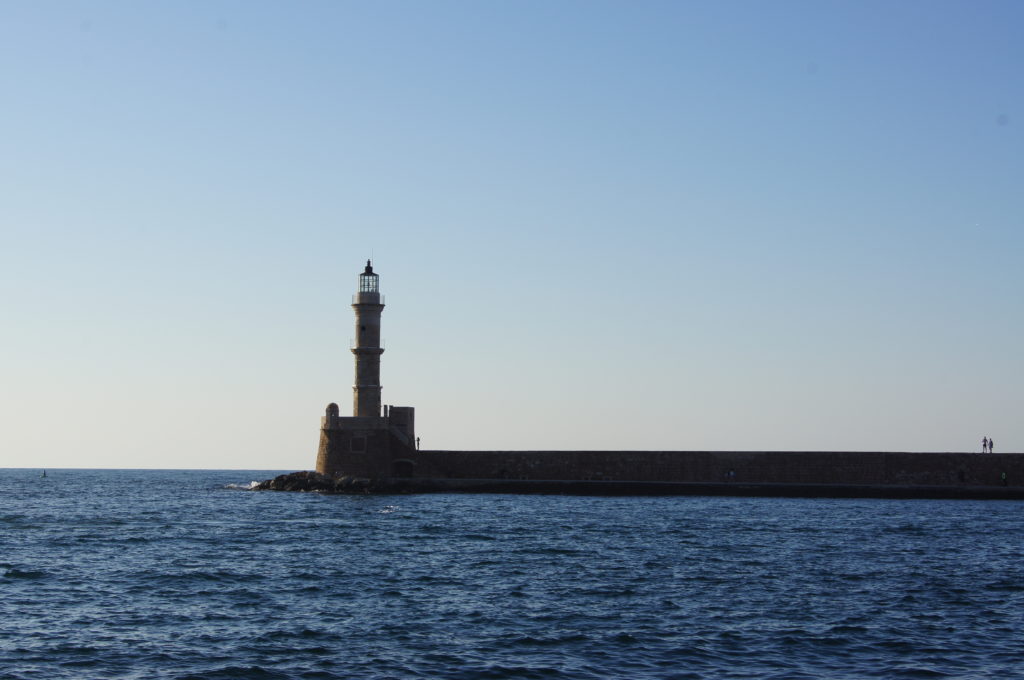
Chania Marked the Beginning of My Greek Cuisine Odyssey
The Greeks are experts at enjoying good company and tasty food LATE into the evening. Below are a few notes on Greek cuisine and my taverna experience:
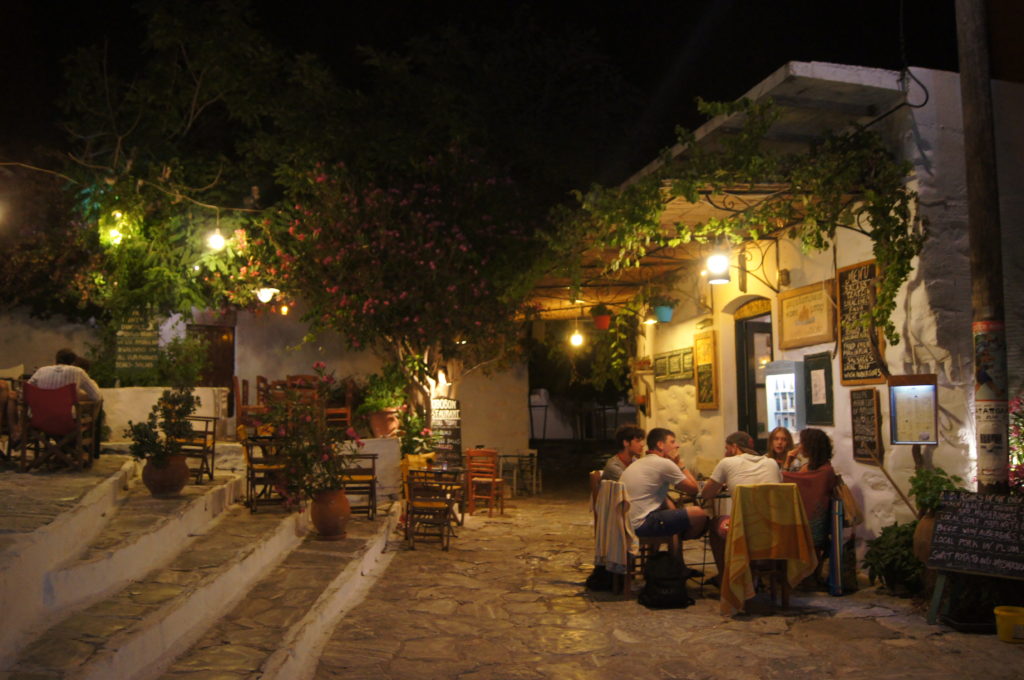
- Greek food is fresh and delicious.
- My Greek cuisine odyssey began in Chania, but the delicious food trend continued when I traveled to other islands (especially on Amorgos and Astypalaia). Two standout dishes included: 1) fresh cucumbers and ripe tomatoes bathed in Greek virgin olive oil and 2) crispy fried zucchini balls. Grilled octopus became a steady part of my Greek diet. And, the meat dishes, specifically the goat, lamb, and veal dishes were out of this world.
- Traditional Cretan delicacies: “Dakos” is a tasty traditional Cretan meal; it is rusk or twice baked bread topped with fresh goat cheese. “Raki” is a Cretan spirit, that I once heard described as the nectar of the Cretans. At the end of every dinner in Crete, we were served a bottle of raki gratis. It is a strong alcohol that reminded me of moonshine in the states. It burns your throat on the way down, but is a nice way to cap off a meal and gives you the push you need to continue your evening rather than call it a night.
- I’m not a big dessert person, but I thought it was a nice touch that some type of complimentary dessert, be it a small bowl of rice pudding or fresh watermelon slices, was served at the conclusion of each meal.
- The Greeks enjoy extremely late dinners; in fact, I’m not sure if the kitchens ever close in Greece.
- I first noticed the late dining habits of the Greeks while in Athens; I was confused to see families with young children eating dinner at midnight. I lived in NYC for five years, “the city that never sleeps”, but Greece is a whole other animal. In New York City, it is not unusual to be turned away from a restaurant after 10 pm, not the case in Greece my friends.
- Greeks are all about the small plates.
- When I went to dinner with hostel friends we often ordered lots of dishes and shared our food, Spanish tapas style.
- Greeks don’t believe in flipping tables. If you manage to snag a table, it’s yours for the evening.
- This table treatment is both a blessing and a curse. One night we asked a waiter how long it would take for a table for seven to become available, the waiter shrugged and suggested coming back the next day. On the other hand, once we were settled at a table, we could sit there chatting and nibbling on dishes for hours and no one would blink an eye.
In Chania, I recommend sharing small plates at To Kafeneio and then grabbing drinks at the local hot-spot, Sinagogi Cafe-Bar.
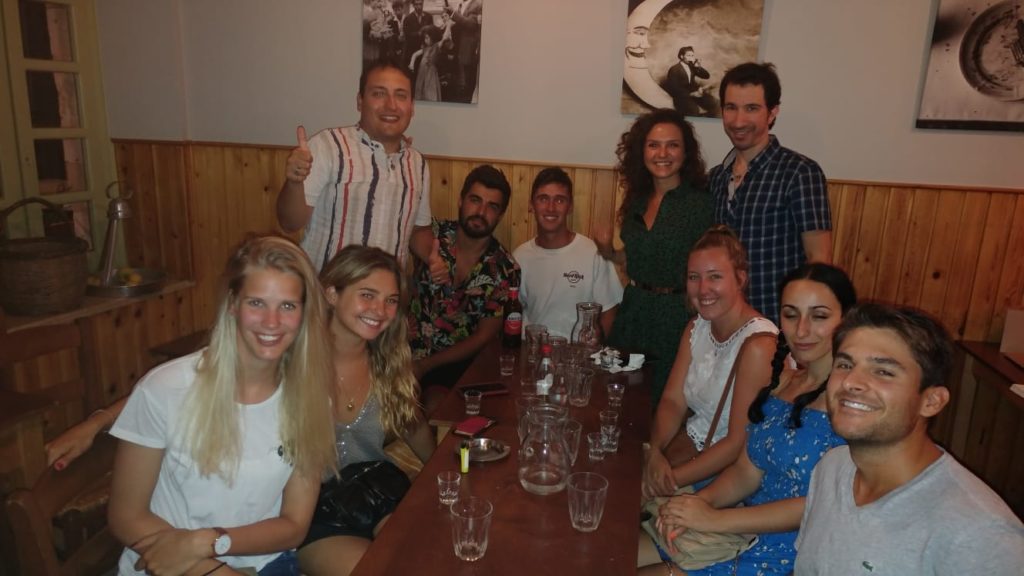
Activities Around Chania
I only spent a few days exploring Chania and taking day trips to nearby attractions, but I certainly could have stayed longer in Chania (and longer at the terrific Cocoon City Hostel). There are numerous day excursions that you can go on while staying in Chania, below are a few day trips you may want to check out:
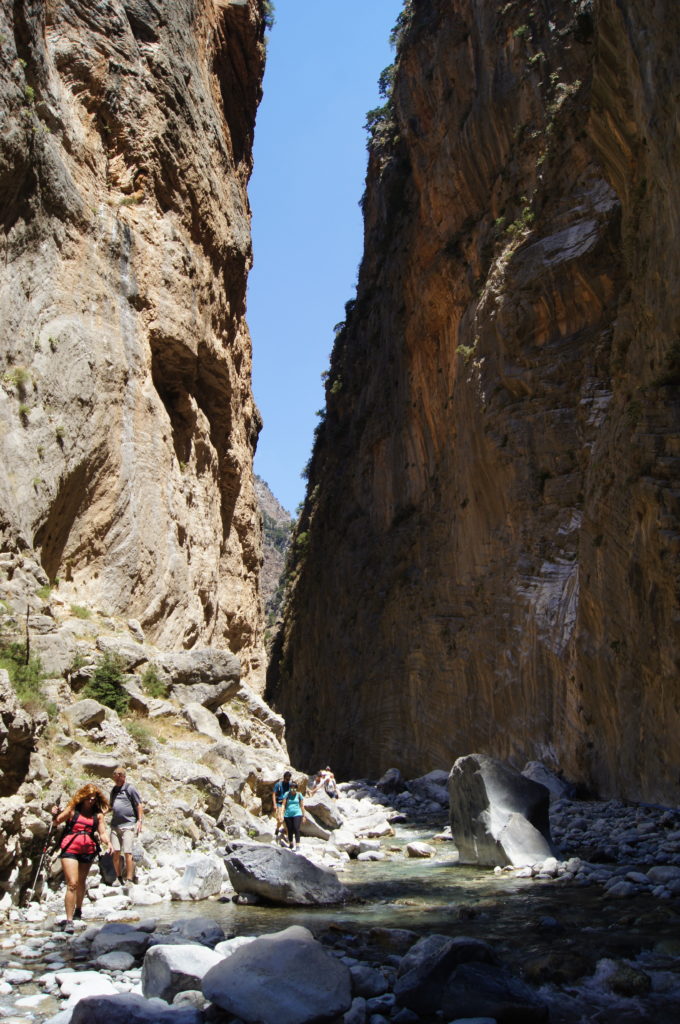
- Samaria Gorge: I motivated for a 10.4 mile (16.8 km) hike through the Samaria Gorge, the longest gorge in Europe (some argue it is the second longest). The Samaria Gorge is a fun and visually stunning day hike that involves a downhill trek from an elevation of 5,000 feet (1,500 meters) into a magnificent canyon which leads to the sea. I’m I bit spoiled, and admit that it’s hard to compete with my recent hiking experience in Peru. See My 10 Day Adventure in Peru post. I ran into a significant amount of foot traffic along the path and the hike consumed the majority of my day, but the hike is still worth it. If you are only visiting Chania for a day or two, I would not recommend spending an entire day on the hike; otherwise, especially if it is off-peak tourist season, add it to your intinerary.
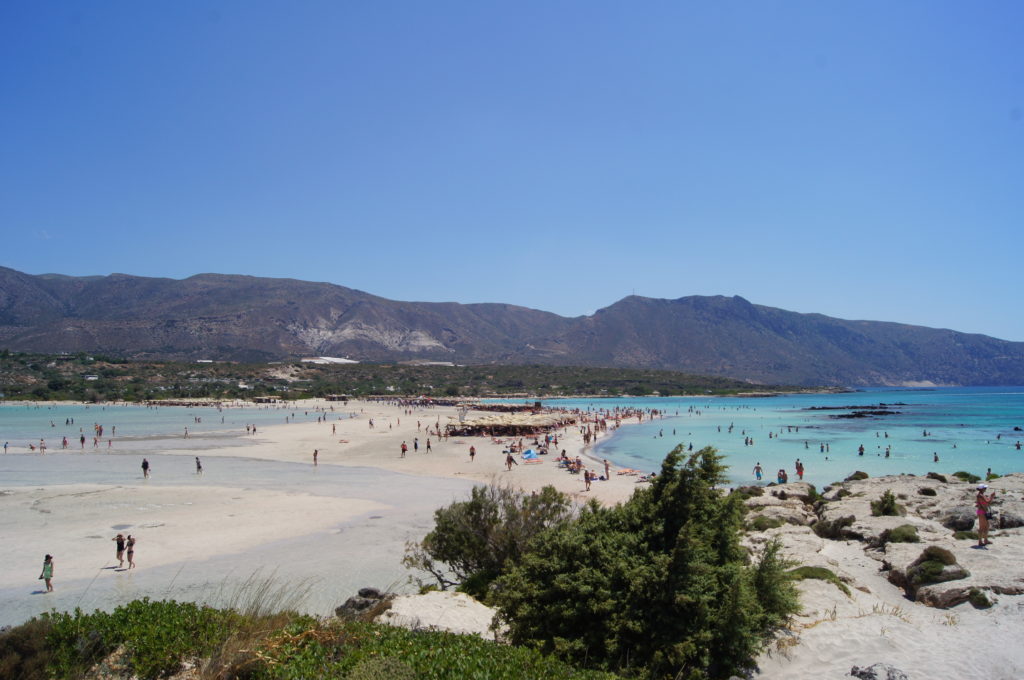
- Elafonisi Beach: I visited the pink sands and shallow crystalline waters of Elafonisi Beach. The main strip of beach sits between an enormous shallow pool of water and the shallow turquoise waters of the Mediterranean. The beach is one of the most famous beaches on Crete. Although there are rules in place to prevent resorts from popping up along the beach, it is unfortunately no longer a Cretan secret; there were hundreds of chaises and umbrellas for rent and armies of tourists swarmed the beach. Elafonisi was a fun stop, but talking to locals in order to find other lesser known beaches might be the move. If you visit Elafonisi Beach, on your journey back to Chania, I recommend stopping in the idyllic town of Elos for some delicious traditional Greek food. Please try the local baby goat meat. Have a ever lead you astray?
- Balos Beach: Many travelers recommended visiting Balos Beach, but I chose to spend a day wandering the streets of the Old Town in Chania rather than take another day trip. But, if the weather is nice and you have the time, stop by Balos Beach early in the morning or at sunset. Some of my hostel mates were taken by this beautiful beach lagoon.
Plakias, Crete
While researching spots to visit in Crete, I stumbled across the small beach town of Plakias, located on the southern coast of Crete. I noted that a hostel in Plakias, set in an olive grove, Youth Hostel Plakias, had once been recognized as the best hostel in Greece. I decided to pay Plakias a visit, and after a couple short bus rides, I found myself in the lovely coastal town.
Youth Hostel Plakias is one of the strangest hostels I have ever visited, but I enjoyed my stay there immensely. I refer to this hostel as a “hippie hostel”, as I saw some strange things there that I wasn’t used to seeing at hostels, such as: a number of travelers had decided to post up in the hostel for weeks or even months at a time; a family with a young child was staying in my mixed dorm; overflow beds existed on the roof; guests could be found dozing and reading in hammocks scattered around the hostel grounds; and everyone cooked together in a tiny communal kitchen and shared food. A bizarre, unique, and enjoyable stay.
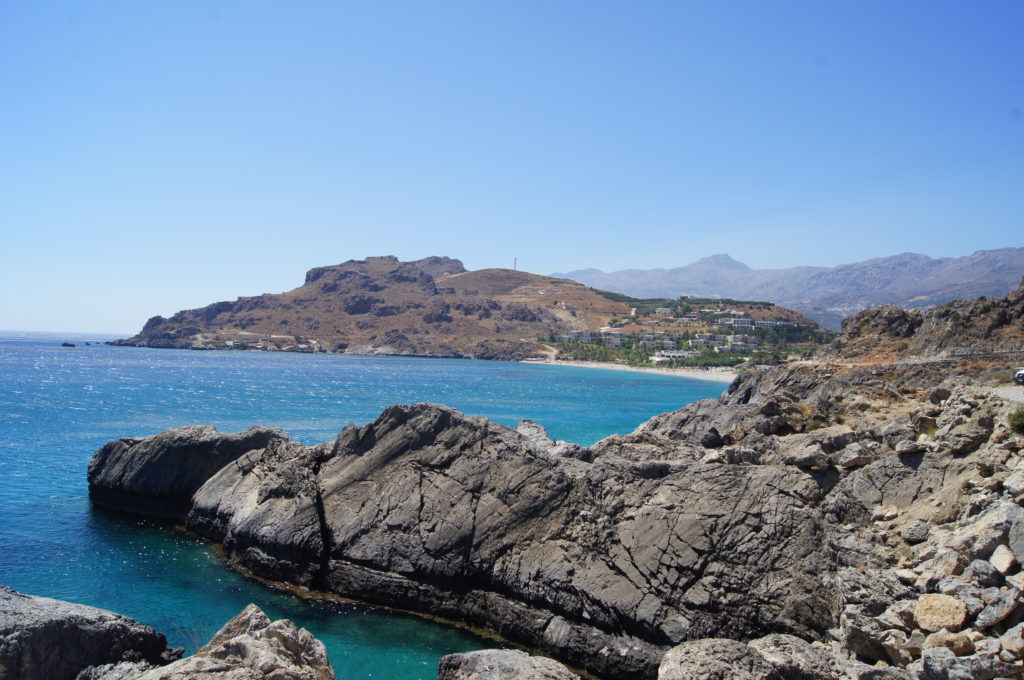
The jagged and rocky Plakias coastline was stunning and I loved hiking along the coast even though, at times, I felt like the wind would knock me over a cliff’s edge and out to sea. A highlight of my time in Plakias was hiking to One Rock Beach and pencil diving off the rocks into the crystal clear Mediterranean waters with my hostel friend Ollie. Although we were only jumping from ~25 feet (7.5 meters), it felt like we were jumping off ten story skyscrapers. After our jumps we swam under rock formations and in and out of small coves scattered along the coast.
The Greek Island Hopping Continues
After spending a terrific week in Crete, I journeyed by ferry and visited three smaller islands: Paros, Amorgos, and Astypalaia.
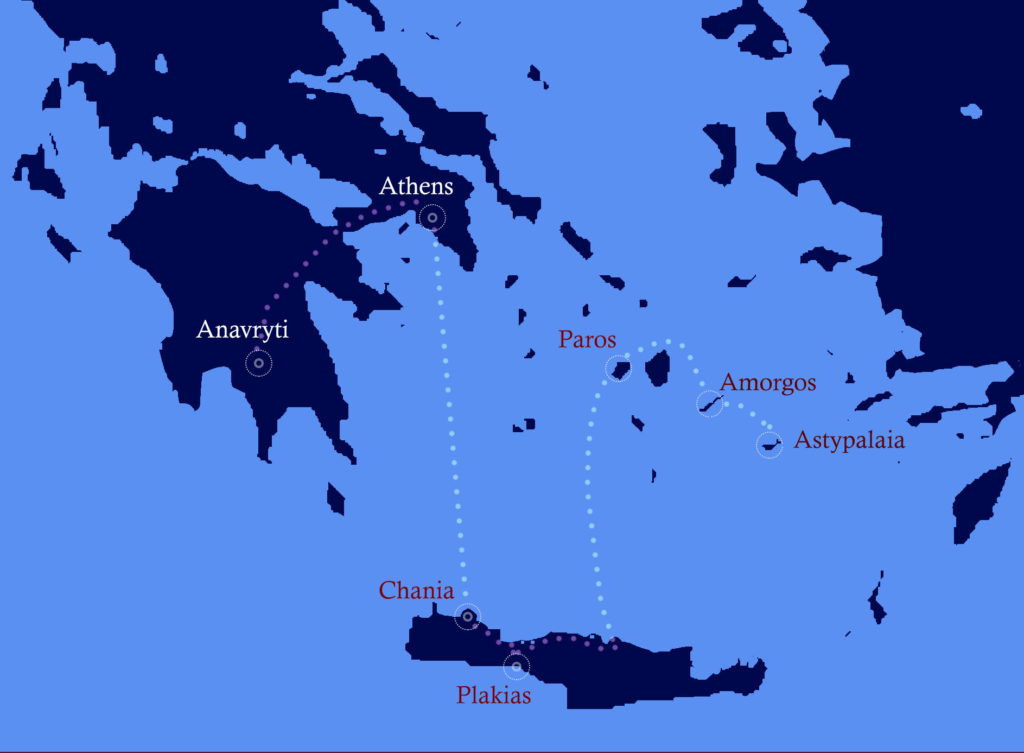
Paros, Greece
Paros is a popular tourist destination and is part of the Cyclades, the most visited island chain in Greece. Thousands of tourists arrive and depart Paros on massive ferries each day. Paros’ main cities (Parikia and Noussa) are pretty; the wind conditions are ideal for water sports; the nightlife is highly touted; and the island is located next to other hot-spot islands, such as Mykonos, Santorini, and Naxos, which makes it a nice stopover. Although Paros has a lot to offer, the multitude of tourists turned me off, and before long I was ready to jump on a ferry and head to another less crowded island.
I became sick in Paros, so that may have impacted my views on the island. Because I was sick, I didn’t check out the Noussa nightlife or rent a moped to drive around the island, as I had intended. I did discover a cool rooftop bar in Parikia called BeBop, so if you find yourself in Paros, definitely pay it a visit and mingle with the locals.
Amorgos, Greece
I escaped Paros and ferried over to the island of Amorgos, the easternmost island of the Cyclades island chain. I stayed in Chora, which is a medieval city hidden in the hills of Amorgos. The city of Chora, a typical name for the main town on a Greek Island, was tiny, but I quickly became enamored with it. Unlike Paros, there weren’t many tourists on Amorgos, and I had to let a room as there were no hotels or hostels.
Chora is comprised of a labyrinth of stone-paved alleyways, but the heart of the city exists along just two main alleys, which cannot be driven on with a car. These main paths are lined with shops and seating for outdoor dining. The town or more aptly named, village, was quiet during the days, but the main alleyways were packed with people enjoying authentic Greek cuisine late into the evenings. The food did not disappoint in Chora, and all meals were enjoyed under the open sky alongside Greek families, who appeared to be visiting the island for their summer vacations.
During my visit to Chora, I enjoyed a picturesque view of the city and sunset from the vantage point of old windmills which lined the hillside bordering the uppermost edge of the city.
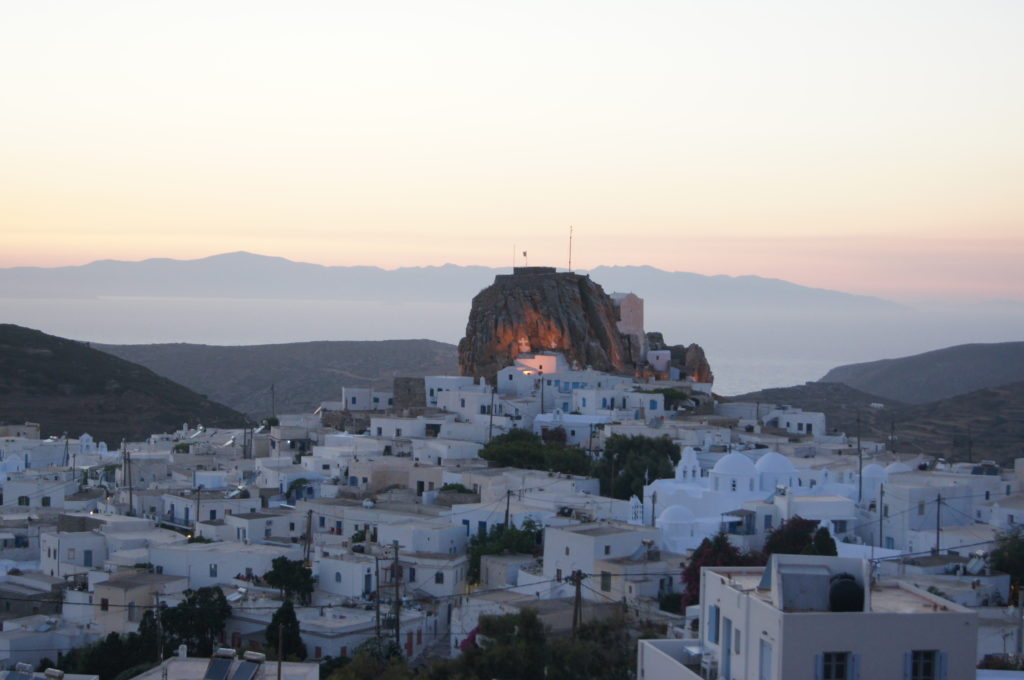
There is a very cool 13th century castle “Kastro” which sits on top of a rock that juts out from Chora’s center. I was told, by a talkative local waiter to borrow a medieval key from a nearby taverna, which would grant me access to the Kastro. I secured the key, hiked up the stairs, slipped the key into the keyhole, and walked through I tiny monastery, stumbling out onto the rocky lookout at the top of the fortress. The view from the top was beautiful. The fortress was built so that the residents could hide and protect themselves when pirates would invade the island; according to legend, the residents would spill hot oil on attackers from holes in the stone parapet surrounding the edge of the fortress.
On my last day in Amorgos, I took a gorgeous hike down from Chora to the ocean. I didn’t have a chance to visit the Monastery of Hozoviotissa, which is a famous ancient monastery wedged into the precipice of a cliff on Amorgos, so I guess I’ll have to come back one day.
Astypalaia, Greece
I spent my last few days in Greece on the beautiful island of Astypalaia; an island which is part of the Dodecanese island group and has approximately 1,000 inhabitants. The island is called “the butterfly of Greece”, because its shape resembles that of a butterfly. Once again, I stayed in a city which went by the name Chora. In Chora, I rented an AirBnB loft apartment which was situated between the small harbor and the monastery located at the peak of the city. While in Chora, I visited a couple of local beaches which were walking distance from my apartment, and I roamed through the maze of city streets to the monastery, where I enjoyed gorgeous views of the coastline.
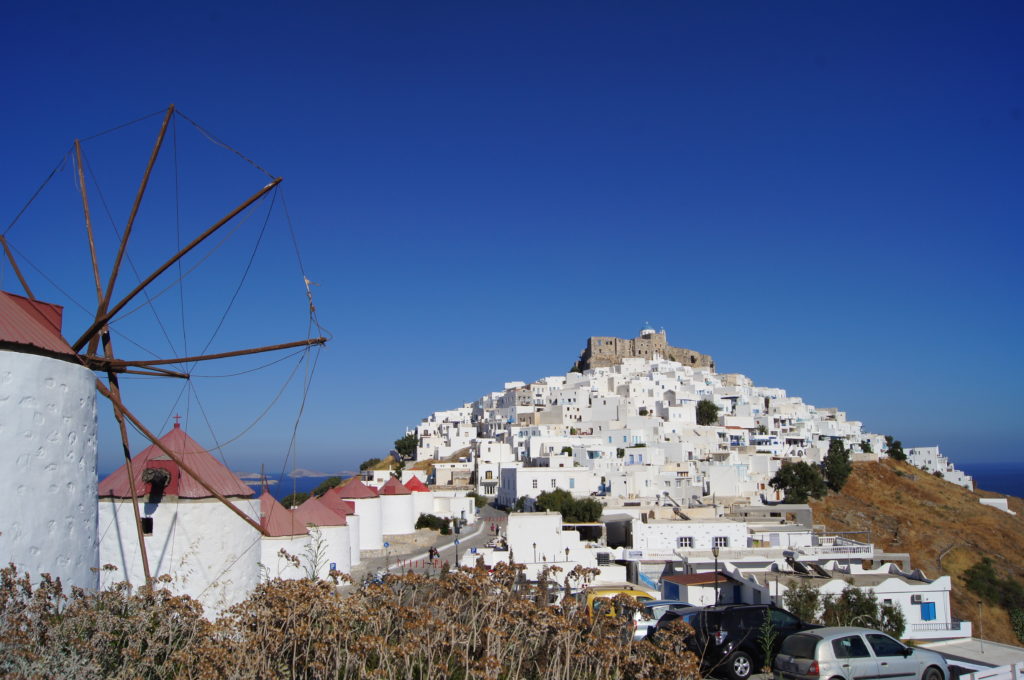
Amorgos and Astypalaia, the last two stops on my Greek journey were my favorite spots. I didn’t do a crazy amount of adventuring during these visits, but instead spent my time outside under the endlessly blue cloudless Greek sky. I wandered streets shouting kalimera “good day” to old women sweeping their alleyways, read my books, enjoyed loads of authentic food, and refreshed myself by constantly jumping into the Aegean waters.
When my time in Astypalaia was up, I took an hour flight to Athens. The Astypalaia island airport was minuscule with one small runway, and our prop plane was the only plane sitting out on the tarmac. When we arrived in the Athens airport we were told to go to the baggage claim but our bags never arrived. After one hour of waiting, we were notified that our plane captain had arbitrarily decided to leave ALL of our luggage in Astypalaia, because our plane was too heavy. This news lead to lot of disconcerted passengers, approximately 80, and a significant barrage of Greek curse-words. I was on my way back to the states and didn’t have another plane to catch for a few hours, so I found the entire spectacle to be rather amusing. I did feel for my fellow passengers, some of whom, apparently had very important luggage sitting in the Astypalaia airport. Also, the debacle was made much worse because flights seldom leave from the island; as a result, the bags would not arrive in Athens until the following day. My pack arrived in Newark, New Jersey two days later. Classic Greece! I recommend checking for flights to and from many of the small islands in Greece to save travel time. **But, be sure to pack a small carry-on with your essentials, just in case your captain makes an important weight decision without alerting you or your fellow passengers before (or after) take-off.
Advice for Traveling Around Greece
- If you wish to jump around the Greek Islands without making arrangements in advance and wish to avoid the hordes of tourists, I recommend traveling to Greece in either:
- Spring (late April, May, or early June) or
- Fall (late September, October, or early November).
- You only need one day to visit the ancient ruins of Athens.
- If you are visiting Athens, I would recommend securing tickets to a performance at the Odeon in advance of your visit, this setting under the lights is stunning, and I believe it would be an experience of a lifetime.
- There are numerous ferries to the Greek Islands, but I recommend looking into flights, even to or from the smaller Greek islands. Pack a small carry-on, with your essentials, just in case your captain makes an important weight decision without alerting you or your fellow plane passengers.
- If you are looking to party, visit Mykonos or Ios. If you are trying to escape the crowds, visit Amorgos and Astypalaia. A few Greek locals recommended Milos; I couldn’t find last minute accommodations, but this island also looked like a special place.

